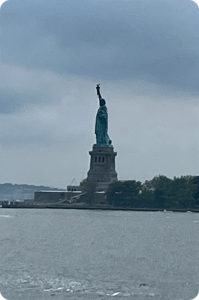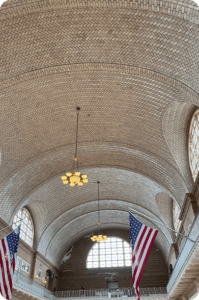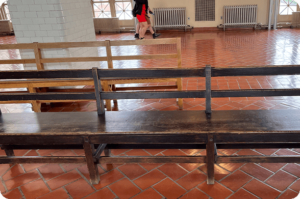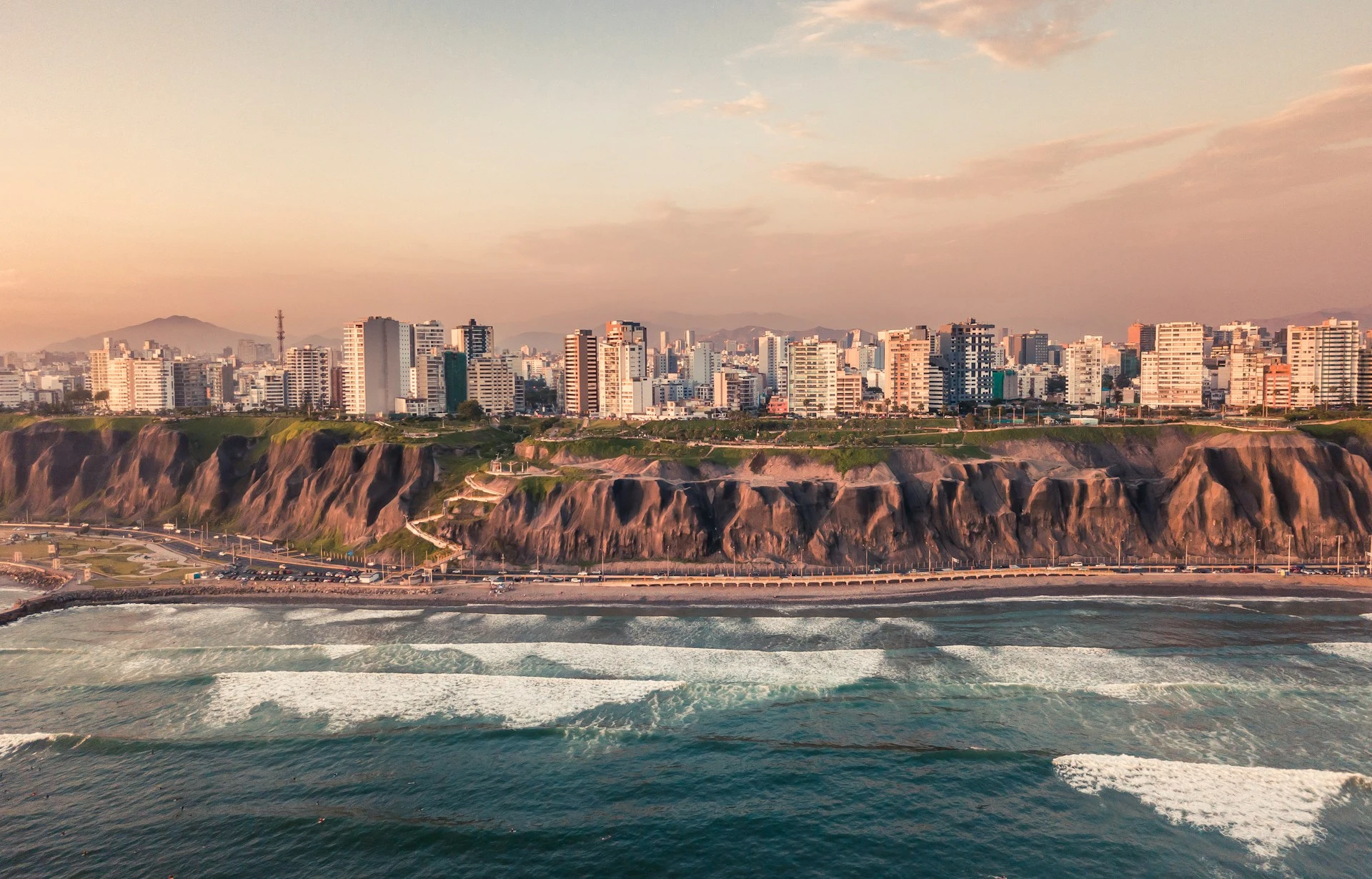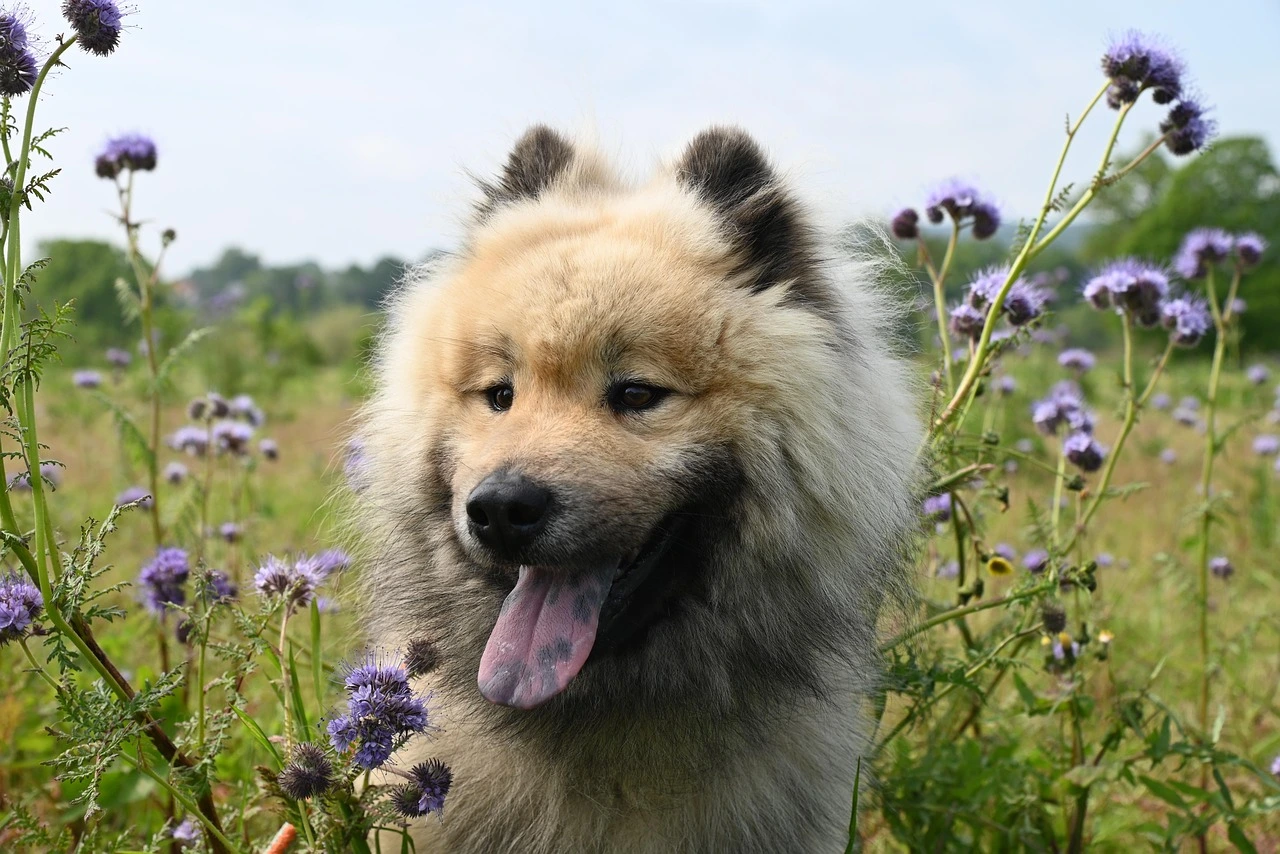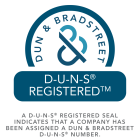Written by Jaden Parker
Since my maternal ancestors came from Slovenia to Ellis Island, I decided to add this stop to my list. On the Miss New York to Liberty Island, I stood along the side, looking over the railing into the water. In typical New York fashion, it was a rainy, dreary day.
There were dozens of different languages being spoken on the ferry. It was the closest experience I will ever have to America’s claimed “melting pot.” Although a majority of the people onboard didn’t speak English as their first language, you still could see the tropes of any other family: the excited children, the exhausted grandparent, the overly organized parent.
Almost the entire crowd got off the ferry at the Liberty Island stop. I knew I needed to use my day to get to the places that were the farthest away from Hudson Yards, so I wanted to make sure I gave enough time to Ellis Island while also making time for my two other stops of the day. The only view I got of Lady Liberty was as the ferry was pulling away; she stood there tall and proud amidst the fog.
I promised myself I would come back and visit her someday in the future.
When I stepped onto Ellis Island, the sun began to break through the clouds. There was a line of people shuffling slowly into the giant building. I couldn’t help but wonder if this is what it had been like for those immigrants starting to arrive in the early 1890s. I didn’t hesitate to take advantage of the little phone you hung around your neck that toured you through the place. Surprisingly, not a lot of people chose this route, even though it was offered in just about every language under the sun.
In 1897, a fire burned down the original building. From that day, it was declared that only fireproof buildings could be constructed on Ellis Island. It reopened in 1900. In 1954, the last immigrant was processed. The building deteriorated from abandonment until Dr. Peter Sammartino started a campaign to clean up Ellis Island in 1973. When people came to look at the property, there were trees growing in the Great Hall, which was the first room I entered.
The Great Hall, or Registry Room, was where immigrants received their medical examinations. The high arched ceiling with Guastavino tiles was restored to its original state; and if you looked up, you could see a higher section for people to look down on the main floor.
This was where officials would stand in order to point out any people coming in who looked dazed, sick, or injured. Those individuals would have a chalk marking put on their coats by a doctor.
The phone guide had voices from immigrants themselves, and a lot of them echoed how afraid and uncertain they were. To this day, the original dark brown benches people sat on are there.
One needed $20 to be admitted. That’s roughly $730 today! Because that’s a lot of money, a person in the front would show their $20 and put it in their back pocket. The person behind them would take that same $20, show it once it was their turn, and repeat the process. It is a myth that immigrant names were changed without the consent of the immigrant. The steamship company had the name written down first. When immigrants arrived, they had the choice of americanizing their names or keeping them the same.

There was the Board of Special Inquiry that kept people who violated immigration law. During that time, there was a law against admitting contract laborers, criminals, anarchists, and those too poor to support themselves.
The board’s decision was based on testimonies by the immigrant and his or her relatives. If an immigrant didn’t like the decision, they had the chance to appeal directly to Washington D.C. and have a lawyer represent them from the immigrant aid society. Out of 12 million immigrants processed, only 2% were denied admission.
One of the enjoyable moments of the tour was listening to immigrants who were young children during the process. One woman recounted how the children had never seen a banana before. She put the whole thing, peel and all, into her mouth! A lot of detainees wrote letters to their families while they waited. In total, 3,500 people died, about 1,400 of which were children. However, 355 babies were born. At the end of the tour were the Stairs of Separation divided by two handrails. The right stairs led immigrants to the ticket office for the train, and the left stairs led to New York City for those appointed to work there. Unfortunately, the middle set of steps was for those being deported back to their home countries.
The Ellis Island tour opened my eyes to so many incredible things. I definitely recommend taking the day to explore both islands. I didn’t want to go into too much detail so that you all could get to experience some of the interesting artifacts for yourselves! With that, our next stop will be the Ansonia Hotel. See you there!


